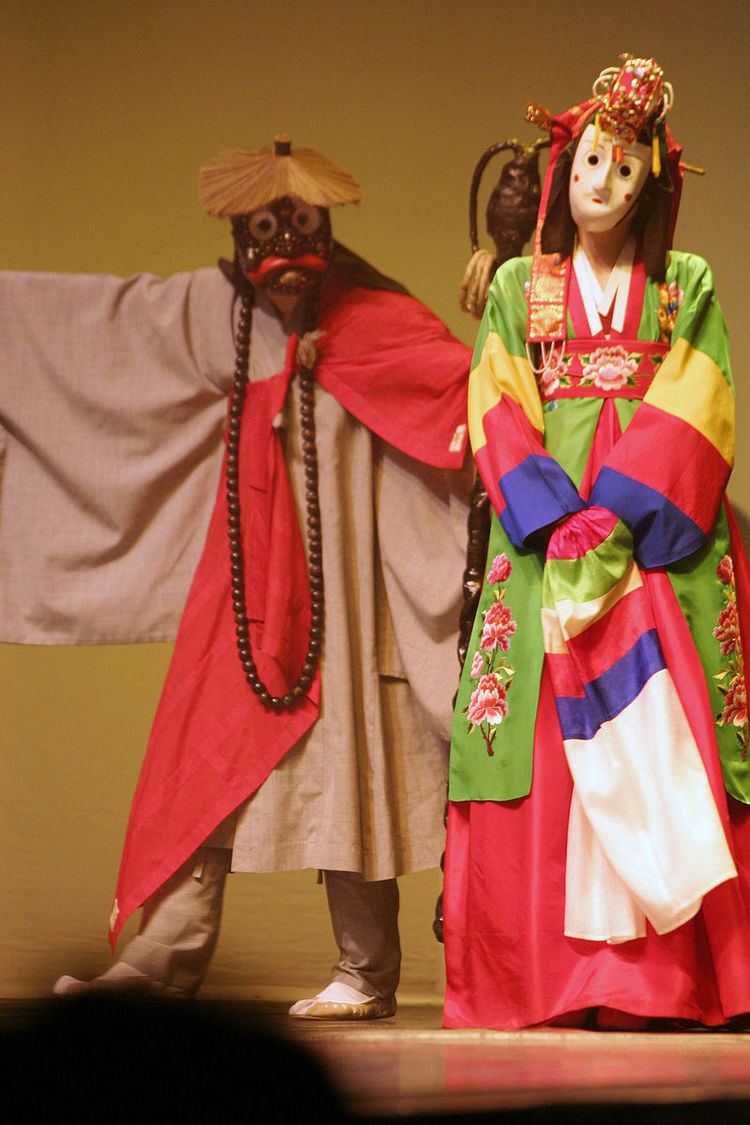Hangul 요무형문화재 Revised Romanization Muhyeong Munhwajae | Hanja 無形文化財 McCune–Reischauer Muhyŏng Munhwajae | |
 | ||
The Intangible Cultural Properties (Hangul: 요무형문화재, Muhyeong Munhwajae) are aspects of intangible culture that the government of South Korea has officially designated for preservation in accordance with the 1962 Cultural Property Protection Law. They are proclaimed and maintained by South Korea's Cultural Heritage Administration.
Items of particular importance can be designated as Important Intangible Cultural Properties (Hangul: 중요무형문화재, Jungyo Muhyeong Munhwajae).
The first item so designated was Jongmyo jeryeak, the ancient music and dance performed at the Jongmyo Royal Ancestral Shrine in Seoul; it was proclaimed on December 7, 1964. The most recent, announced on November 16, 2006, was Important Intangible Cultural Property 119, geumbakjang (gold leaf decoration), practiced in Seongnam, Gyeonggi-do.
A similarly named yet distinct designation, "Intangible Cultural Properties," also exists, with 33 items having been proclaimed. These are proclaimed by provinces or cities rather than by the national Cultural Heritage Administration.
The 1962 Cultural Property Protection Law was modelled on the Japanese 1950 Law for the Protection of Cultural Properties, which provides for the designation of Intangible Cultural Properties as well as the holders of these craft and performance traditions, known informally as Living National Treasures. These early initiatives at a national level influenced UNESCO in its approach to intangible cultural heritage, leading to the 2003 Convention for the Safeguarding of Intangible Cultural Heritage. As of April 2012, fourteen Korean Intangible Cultural Properties have been inscribed on the UNESCO Representative List of the Intangible Cultural Heritage of Humanity.
